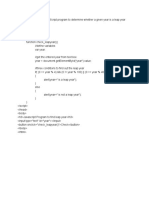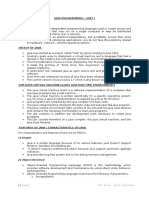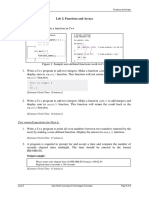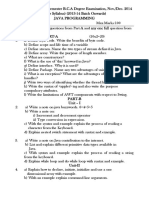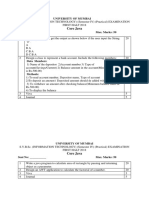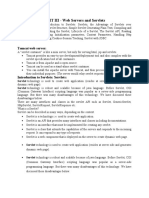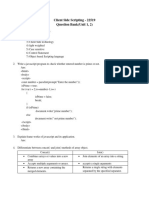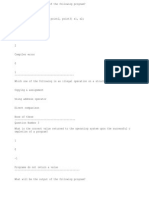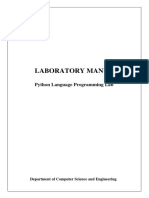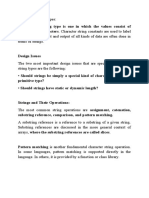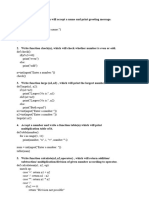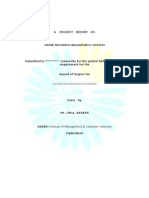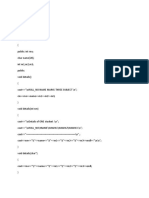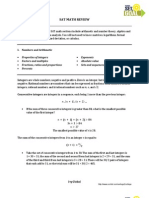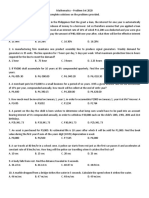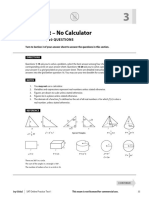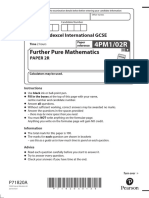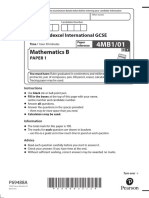100% found this document useful (1 vote)
509 views14 pagesEnter Your Name Nishigandha Enter Your Age 22 Nishigandha You Will Turn 100 Years Old in 2098
The document contains 26 programming problems and their solutions. Some of the problems include: writing a program to calculate a user's 100th birthday, checking if a number is even or odd, finding numbers divisible by 7 in a range, calculating the factorial of a given number, checking if a list contains common elements between two lists, determining if a number is prime, checking if a number is a palindrome, generating Fibonacci numbers up to a given limit, reversing the words in a string, counting the frequency of words in a text file, and more. For each problem, the code to solve it is provided along with example input/output.
Uploaded by
Nishigandha PatilCopyright
© © All Rights Reserved
We take content rights seriously. If you suspect this is your content, claim it here.
Available Formats
Download as DOCX, PDF, TXT or read online on Scribd
100% found this document useful (1 vote)
509 views14 pagesEnter Your Name Nishigandha Enter Your Age 22 Nishigandha You Will Turn 100 Years Old in 2098
The document contains 26 programming problems and their solutions. Some of the problems include: writing a program to calculate a user's 100th birthday, checking if a number is even or odd, finding numbers divisible by 7 in a range, calculating the factorial of a given number, checking if a list contains common elements between two lists, determining if a number is prime, checking if a number is a palindrome, generating Fibonacci numbers up to a given limit, reversing the words in a string, counting the frequency of words in a text file, and more. For each problem, the code to solve it is provided along with example input/output.
Uploaded by
Nishigandha PatilCopyright
© © All Rights Reserved
We take content rights seriously. If you suspect this is your content, claim it here.
Available Formats
Download as DOCX, PDF, TXT or read online on Scribd
/ 14




